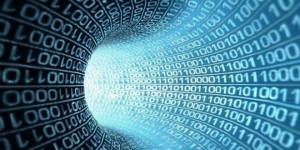
Imaging Intelligence and the New Digital Industrial Economy
By 2020, as the digitization of business increases, nearly everything we use will be embedded with cameras and sensors — our smart phones, our self-driving cars, our wearables, and our traffic lights will all depend on imaging technology. What does this mean for the future and what will we do with all this data?
During this time, in every industry, from transportation to medicine, the Internet of Things and its technology ecosystem will have created an $8.9 trillion market. Of that ecosystem, the combined IT and telecom market will hit almost $4 trillion, or 5 percent of the global GDP, according to this year’s Gartner Symposium in Orlando.
We are looking at the dawn of a new economy, says Peter Sondegaard, senior VP at Gartner and global head of research at Gartner, clarifying, “[it’s] a new era: the Digital Industrial Economy [that will] result in revenue associated with the Internet of Things exceeding $309 billion per year.”

The Internet of Things is going to require heavy-duty processing of all that information, too. It will depend on our ability to capture, store, sort and analyze images. Given that over 100 hours of YouTube® videos and 500 million photos are uploaded and shared every single day, we’re looking at a massive amount of unstructured data. So how can we turn those pixels into actionable, visual data?
This is where the power of intelligent imaging turns dumb pixels into smart images. Intelligent imaging essentially brings visual data to life, thereby opening up a whole new level of effective and mutually influential interaction opportunities. The smartest businesses are already taking advantage of the unique ability to directly reach consumers while others are ramping up to do so.
Imaging Puts Big Data At Our Fingertips
The term “big data” is being thrown around a lot these days. But what does it actually mean? Big data is, essentially, the sheer volume of dynamic information as it pertains to the intelligent systems that are installed to collect and analyze it. Today, Bill Maher addresses Orwellian concerns — with requisite humor in “New Rules” at the end of his nightly talk show. We’ll need to require “New Rules” to ensure we do not compromise individual rights, and that “safety and security” is not a convenient excuse to pry into people’s private information. An enormous challenge – properly and securely managing this data — will also be an equally huge opportunity.
Powerful imaging technology can improve our lives while also advancing other industries, such as healthcare, transportation and retail. Because big data is becoming an entire industry unto itself, the application of it, specifically with regard to facial recognition technology, possesses tremendous possibility for obtaining greater collective knowledge. We will be able to access this intelligence at all times: by 2017, mobile device categories will represent more than 80 percent of device spending.
Imaging Turns Data into Knowledge
Three-dimensional facial recognition technology can assist businesses with making sense of big data in numerous ways. And they can act upon these insights in real time which is useful for us. Knowing who we are helps them customize our entertainment through our SmartTVs at home. We can be reached when we’re on the go no matter where we are. In other words: businesses can connect and respond to customers immediately, delivering what we want when we want it.
The Future of Imaging Technology: Some Predictions



